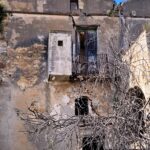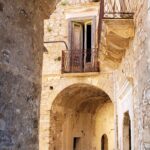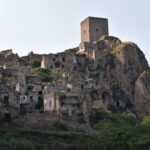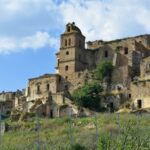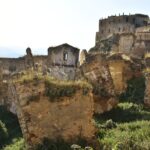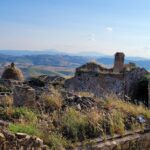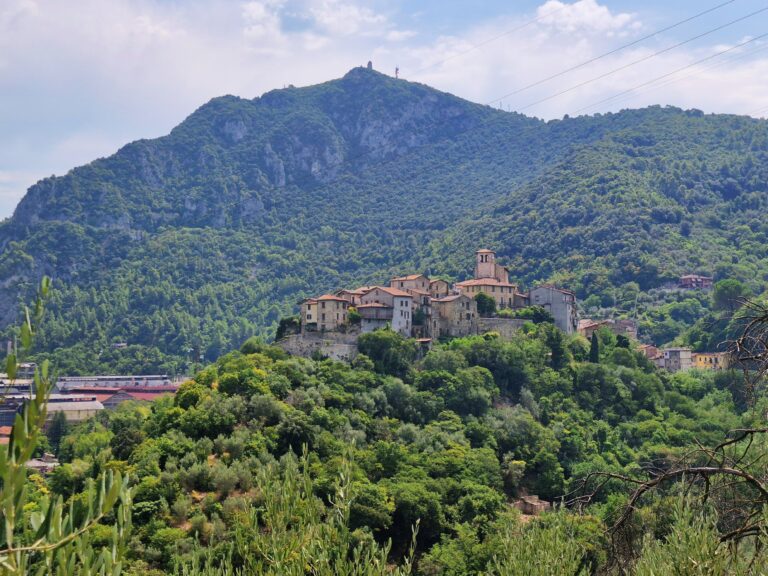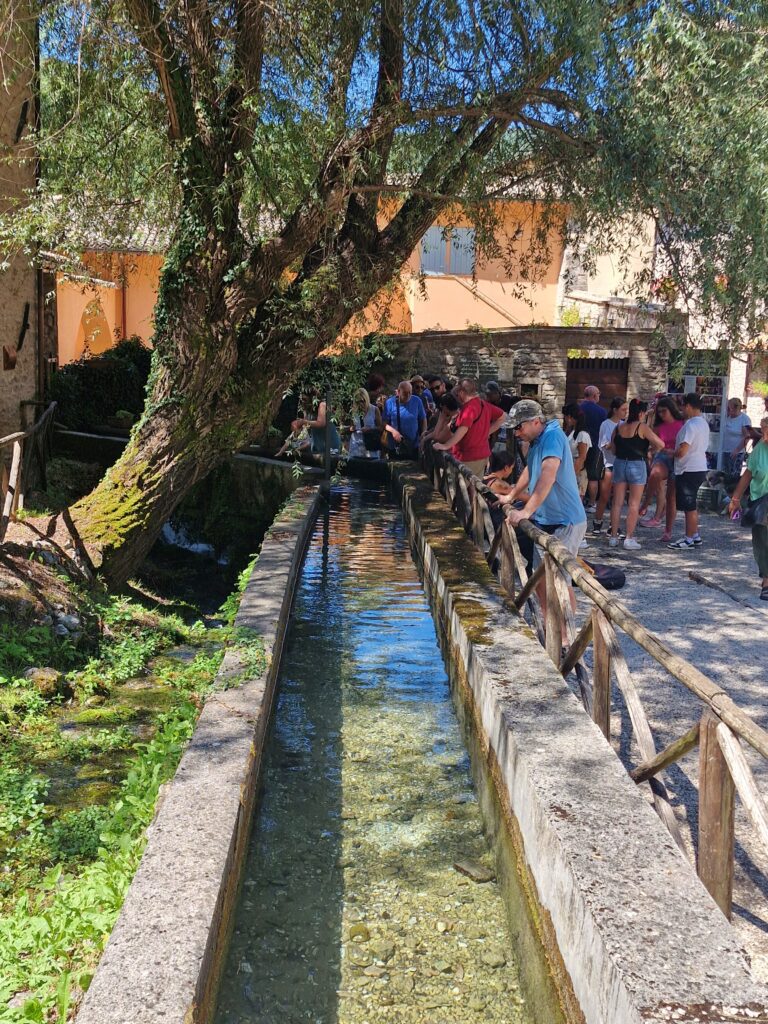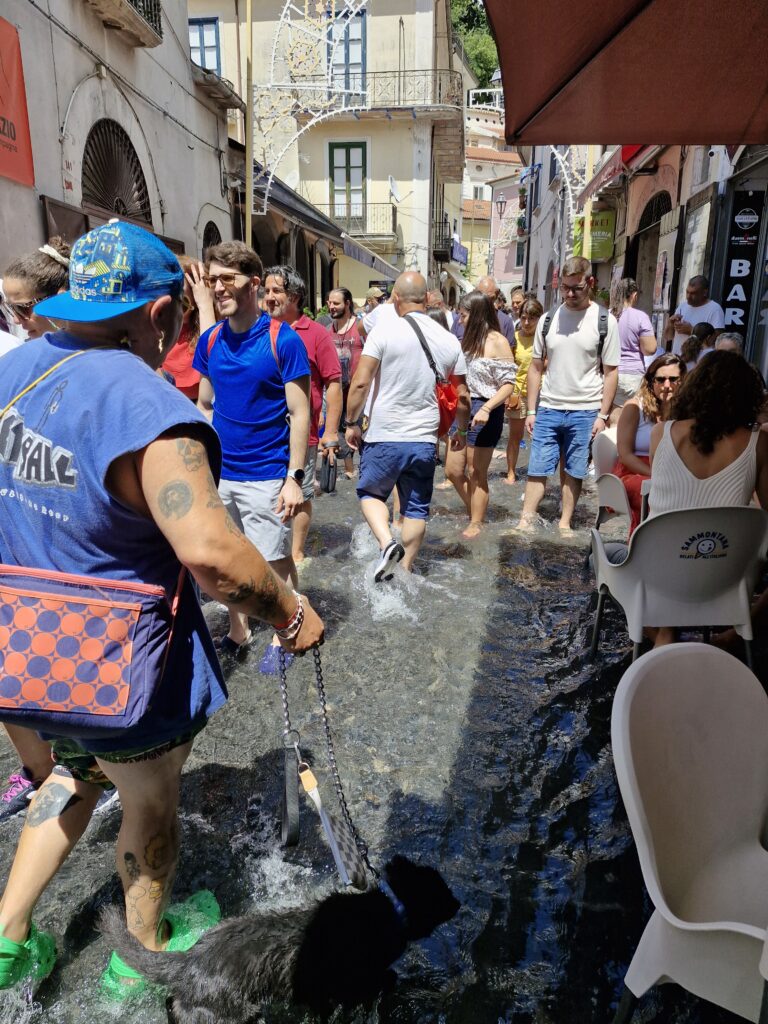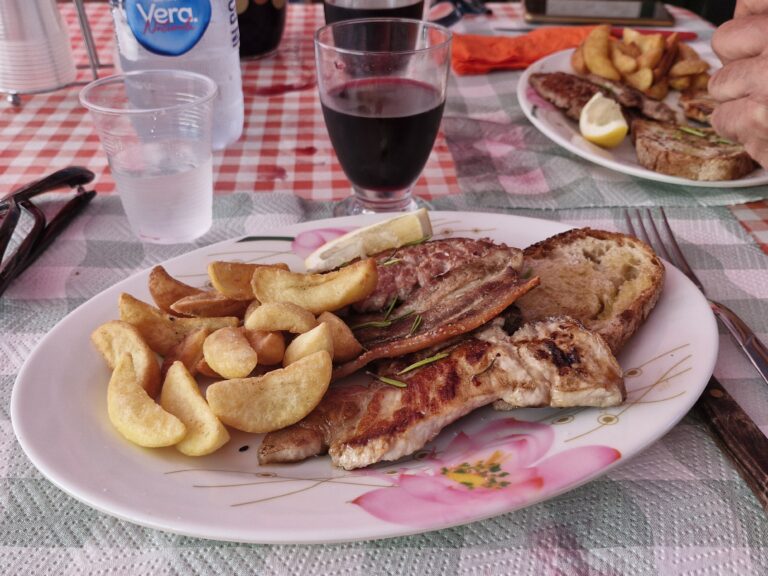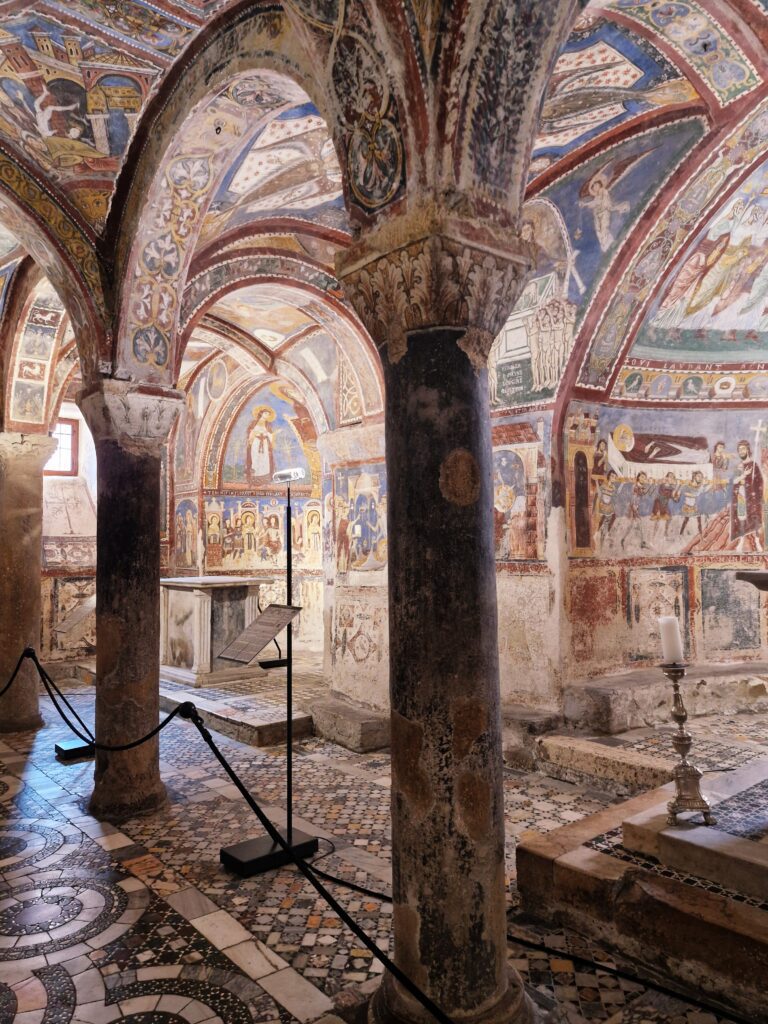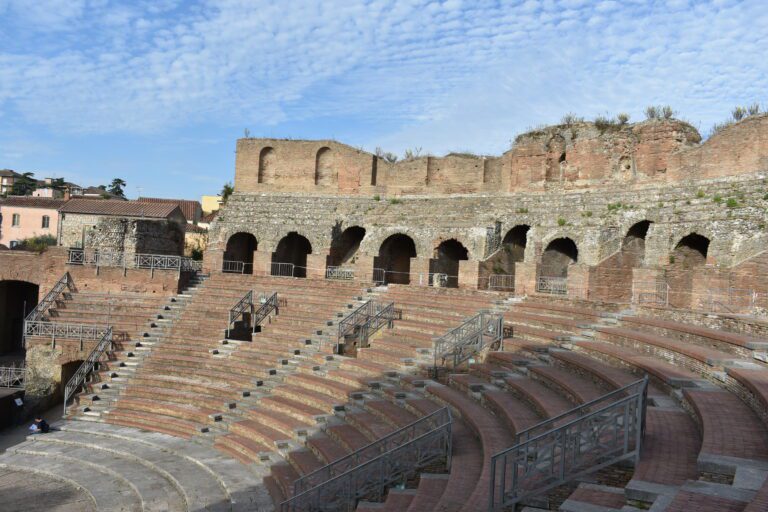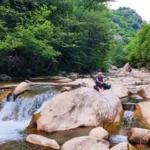The ghost town of Craco is one of many deserted places in Italy, as ghost towns are not uncommon in Italy, especially in the south. Young people leave underdeveloped areas in search of better prospects and rarely return to their hometowns, and towns and villages with an elderly population empty out.
From time to time, nature also stamps its foot and causes a place to become depopulated. And sometimes the combined forces of nature and human carelessness can reduce a place to rubble. The ghost town of Craco has gone down this path: the destruction started by humans was completed by nature.
Where is the ghost town of Craco?
Craco is in Basilicata and stands on the top of a whitish rocky hill only about 60 km from its famous neighbor – Matera. The drive from Matera can take over an hour.
Centuries ago, Craco was known for its wheat production and was inhabited mainly by farmers. At its peak, the town had 2,000 inhabitants. The name of the town is said to come from the ravens that nest there. According to the guide with whom we toured the ruins, another version says that the name is an old Germanic word meaning nomen-omen, cracking.
What happened in Craco.
The ghost town of Craco, or rather its old part, was built by the first inhabitants on solid rock, but the newer part was built on clay hills. Clay is undoubtedly excellent for making pottery and other things; to be a solid base for a settlement, it must remain untouched. You can probably guess what could have happened in the town. Bringing water to it, pouring the contents of toilets onto the streets, and then the rains and winds… The clay softened, became plastic and ceased to be a solid base for Craco.
The first documented landslide in the settlement took place in 1888. Then, in 1959, after 5 days of downpours, another one occurred, which caused cracks in the houses. In the years 1963-1965 the situation worsened, so the residents began to be evacuated. The last, or rather almost all of the last residents moved in 1974 to social housing in Peschiera. Almost all of them, because in the old part of the city, the one built on the rock, the most persistent ones remained – about 100 people. But the town got rid of them too. After the earthquake in Irpinia in 1980, all of them moved out of their homes.
And so Craco became a ghost town abandoned by people. Maybe not completely abandoned, because donkeys and sheep live there.
Is it worth visiting the ghost town of Craco?
As usual, it is a matter of taste and interests. Many people find Craco beautiful and fascinating, but many people are delighted with everything just because it’s in Italy. I don’t share this opinion. Ruins are ruins, I could say, but I liked the view from Craco. And some of the ruins were indeed ‘photographic’. Nevertheless, if you like ruins and stories about abandoned places with tragedies in the background, Craco may interest you. Additionally, for film lovers, it may be interesting to know that many films were filmed in the ruined city, including the famous “Passion” by Mel Gibson.
Practical information
- The museum park is open from 9:00 to 17:30
- Guided tours last an hour and take place every hour.
- It is not possible to visit the ruins independently.
- The ticket costs 11 euros/person (last price)
- With a more expensive ticket ( 13 euros last price) you can also visit the museum adjacent to the ticket office.
- The ticket office is located in the former monastery building. By the road there is a board with the handwritten inscription Bigleteria and there is a small parking lot.
- The ghost town of Craco and its entrance are about 10 minutes walk from the ticket office. There is an asphalt road leading to it, so stick to it and you will find the entrance.
- As you go to the ruins, you may come across shepherd dogs, which the owners do not necessarily pay attention to. The ones we met were not aggressive.
- At the entrance you will be given a helmet, as from time to time a piece of the ruin can fall on your head.
- There are guides there who speak English.
- Craco is full of stairs, so wear comfortable shoes.
- I always have a bottle of water with me.

